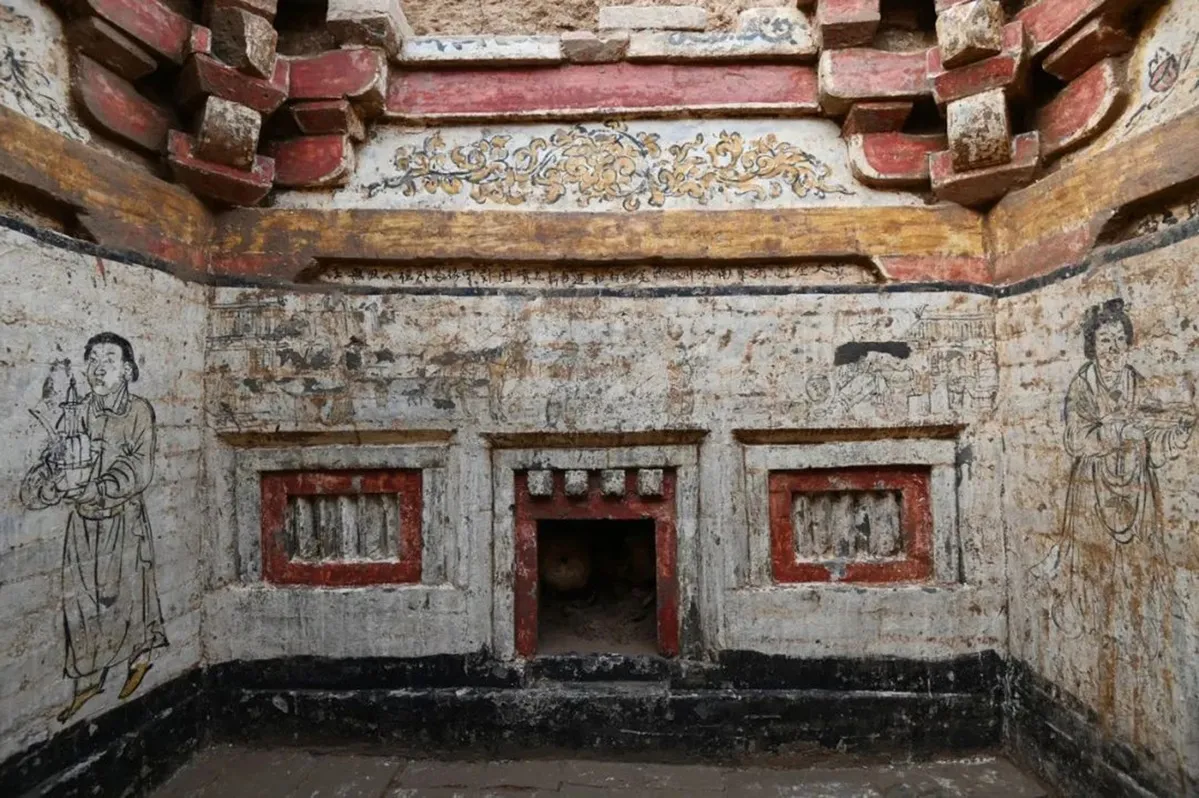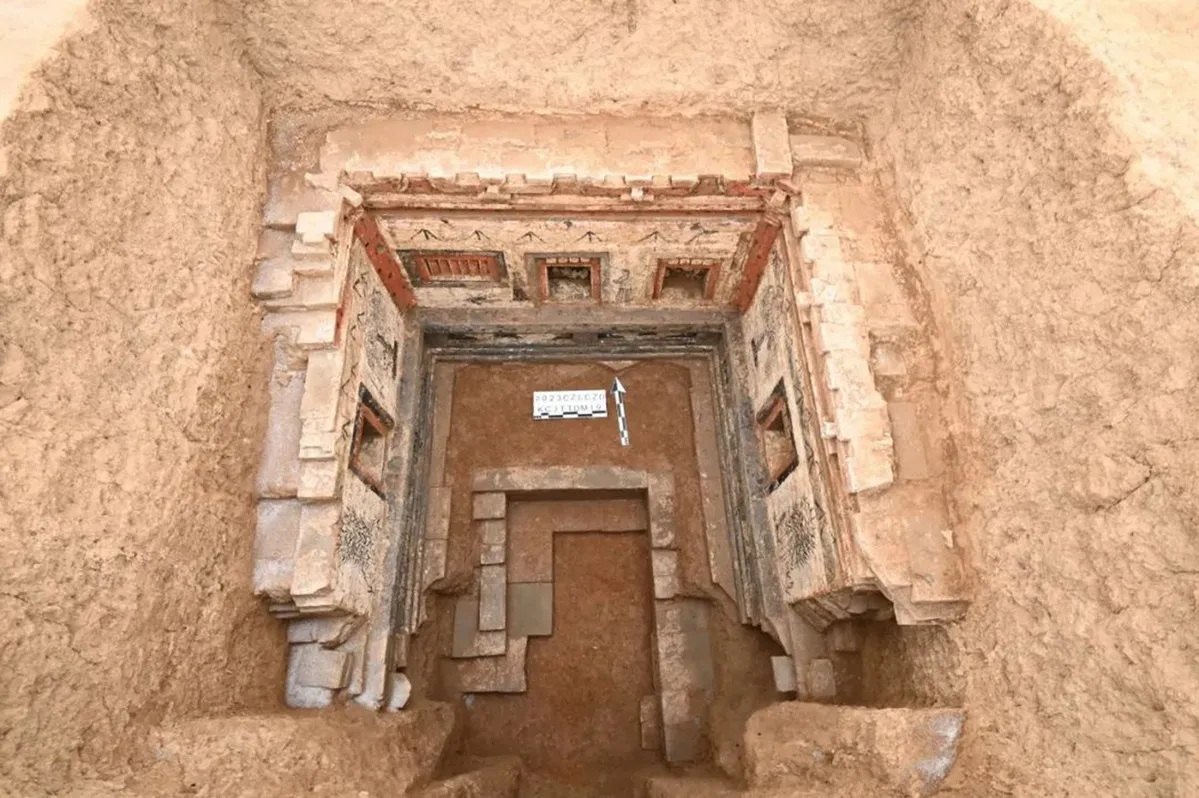What is known
The tombs, located in Changzhi city of Shanxi province, belong to the Zhurzhen Jin or “Great Jin” dynasty, which ruled northern China between 1115 and 1234. However, the rulers of this dynasty were not ethnic Han (the dominant ethnic group in modern China). Instead, they were a semi-nomadic people from northeastern China, says Julia Schneider, a professor of Chinese history at University College Cork in Ireland who was not involved in the excavations.
According to a report about the discovery in China Daily, the official newspaper of the Communist Party of China, the three structures were found during work in the northeastern part of the city in November 2023. At some point in history, the tombs were damaged by looting, but all three are relatively well preserved and contain paintings, decorations, inscriptions and inscriptions.
Both tombs are decorated with arches, doors, windows, figurines and floral patterns, as well as inscriptions detailing the people, events, history and geography of the period in which they were built.
![]()

The catacombs are built of bricks and exquisitely painted with frescoes / Shanxi Institute of Cultural Relics and Archaeology
![]()

The catacombs are built of bricks and exquisitely painted with frescoes / Shanxi Institute of Cultural Relics and Archaeology
However, the third tomb is painted in a completely different style. The walls of his cell imitate wooden structures. The flora, fauna and colors depicted differ significantly from the other two, leaving archaeologists further room for interpretation.
![]()

The walls of one of the tombs imitate wooden flooring / Photo Shanxi Institute of Cultural Relics and Archaeology
![]()

The walls of one of the tombs imitate wooden flooring / Photo Shanxi Institute of Cultural Relics and Archaeology
Differences in burial styles may be a sign of the coexistence of different cultures during the Zhurzhen Jin period. He added that the rulers of the dynasty, also called the Golden Khanate, indicating its origins outside China, were descendants of Tungus-speaking semi-nomadic people from northeastern China.
Their culture was very different from that of their Chinese subjects in terms of customs, eating habits, style of houses, religion, and social organization. To account for these differences, they implemented two different administrative systems, one for Chinese subjects and the other for Jurchens.
– says Julia Schneider.
Zhurzhen Jin came to power in the 12th century during rebellions against the Liao dynasty in the region and fell to the invading Mongols in the 13th century. They were also ancestors of the Manchus, a later northeastern people who conquered China and Mongolia in the 17th century and ruled until the 19th century.
![]()

One of the tombs inside / Photo Shanxi Institute of Cultural Relics and Archaeology
![]()

One of the tombs inside / Photo Shanxi Institute of Cultural Relics and Archaeology
Today, according to Schneider, “Chinese official institutions and media are eager to portray the Zhurzhen Jin Tombs as ‘Chinese’.” A report in China Daily echoed this message, stating that the graves “It reflects traditional Chinese culture, social morals, ancient architectural features, tomb architecture and funeral customs.”.
Viewing historically non-Chinese cultures as Chinese helps “legitimize PRC territory today.”
– adds Schneider.
Uncovering non-Chinese finds has always been difficult for Chinese officials because it shows that China was not always China or Chinese. This is a story that the authorities are trying to suppress.



















